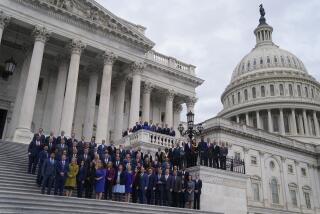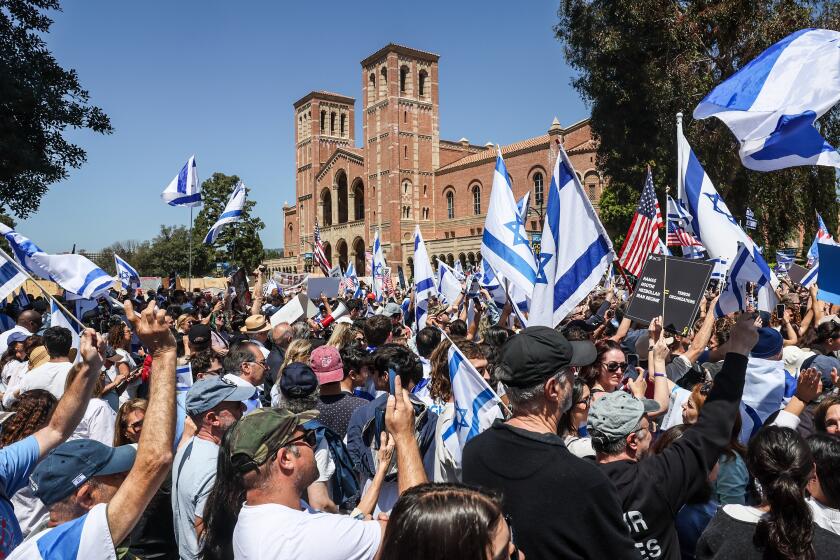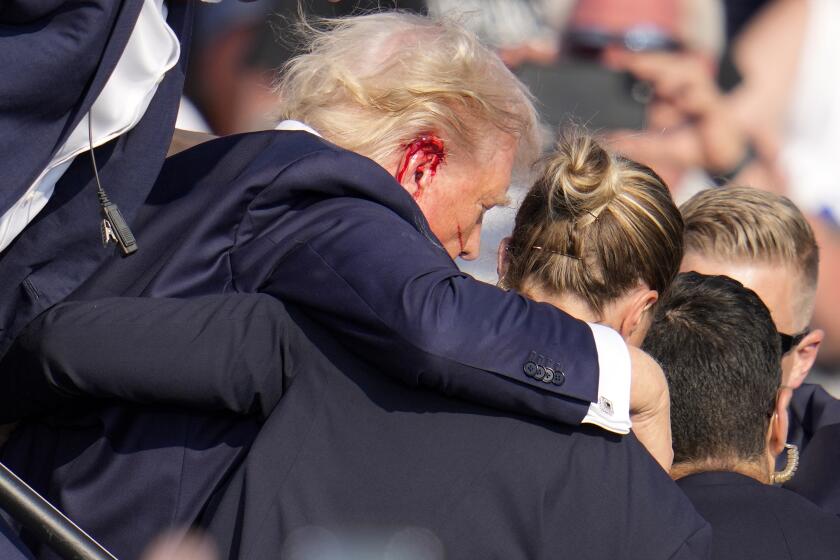Op-Ed: If America had a Memorial Day for peace, would the nation be more reluctant to go to war?

What a society chooses to memorialize says a lot about what it values, which is worth contemplating this weekend as the nation recognizes the sacrifices of military men and women who died in service to their country.
The history of Memorial Day is important. America’s first widespread celebration of the occasion — it was called Decoration Day — came three years after the end of the Civil War, when former Union Gen. John Logan sought to broaden earlier local efforts into a national campaign to decorate the graves of the war dead.
There were a lot of graves to decorate. At least 620,000 (mostly) men in uniform died of wounds and disease during the four-year Civil War. That accounts for nearly half of the nation’s military deaths from all wars combined, a sacrifice of American blood that demanded acknowledgment, and reflection.
It was a horrendous war, claiming about 2.5% of the population, a rate that if extrapolated to current times would amount to more than 6 million war dead.
Still, the nation has been very lucky. No major war has been fought to any great extent on American soil for more than 100 years, and as a result, the horrors of war are a bit more abstract in the memories of Americans — at least of those who never served in combat. Contrast the American experience with that of those who live in, say, France’s Normandy region, or in a long roster of European cities. Or in Tokyo, Hiroshima or Nagasaki. Nanjing. Ho Chi Minh City. Pyongyang. Kabul. Baghdad. Aleppo. And on and on.
Years ago, I stopped in England’s West Midlands, where the ruins of the medieval Coventry Cathedral, gutted by Nazi bombs in 1940, remain as an architectural skeleton and chilling homage to those dark and furious days of war. We have no comparable monument; the Arizona Memorial at Pearl Harbor comes the closest, but it focuses on military deaths.
Coventry Cathedral memorializes how a war ravaged a city, and a people (but not a faith). An American version of that might be a preserved block of Civil War-era Atlanta, with the scorched stubs of buildings a physical reminder not of the courage and sacrifice of those who fought but of the waste and carnage wars leave behind.
Memorials to those who died in service to country are vitally important to the culture. As they tie history to present, they help remind us of the voids those deaths left in families and communities. It’s crucial that we recognize that arc of pain and loss. But it’s also crucial that we recognize the occasionally blind nationalism with which we shroud such memorials, and the national policies — sometimes too quick to the trigger — that put soldiers in harm’s way.
Warrior culture pervades American society, from the military flyovers at major public events to the video games we play, to the movies and TV shows we watch. It even informs the vocabulary of our political life, where “war chests” finance “campaigns” by “foot soldiers” in “battleground” states directed by top “lieutenants.” Less militarily, there’s the obligatory singing of the national anthem before sports competitions. (I never have quite caught the connection between watching a baseball game and a public communal expression of love of country.)
But we are conflicted. We yearn for peace while honoring the sacrifices made in war and memorializing those who risked or sacrificed their lives while serving their countries. It reminds me of a 1905 speech by Horace Porter, then-U.S. ambassador to France, about why he was so committed to finding the body of John Paul Jones, the American Revolutionary War hero whose remains went missing shortly after they were buried in the City of Light during the French Revolution.
“While other nations are gathering the ashes of their heroes in their Pantheons, their Valhallas and their Westminster Abbeys, all that is mortal of this marvelous organizer of American victories upon the sea lies like an outcast in a squalid corner of a distant city, in a neglected grave, where it was placed by the hand of charity to keep it from the potter’s field,” Porter told the crowd, adding that it was a nation’s responsibility to honor its warriors, both those who died in battle and those — like Jones — who survived.
I wonder, though, whether a culture that puts so much emphasis on its warriors ultimately finds it easier to put them in harm’s way. Maybe if we had more memorials to peace and nonviolence, we’d be more reluctant to send soldiers into battle in the first place.
Scott Martelle, a Times editorial writer, is the author of the recently published “The Admiral and the Ambassador: One Man’s Obsessive Search for the Body of John Paul Jones.”
More to Read
A cure for the common opinion
Get thought-provoking perspectives with our weekly newsletter.
You may occasionally receive promotional content from the Los Angeles Times.







